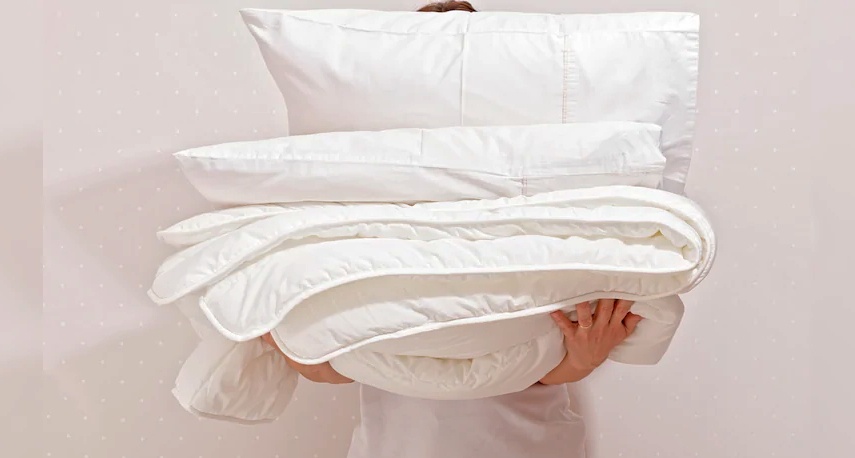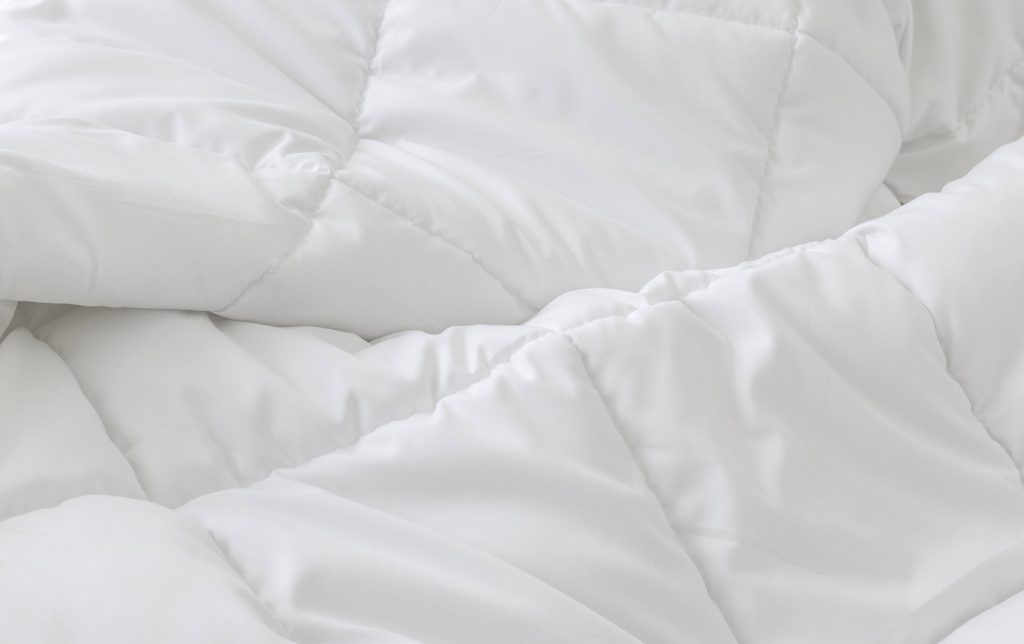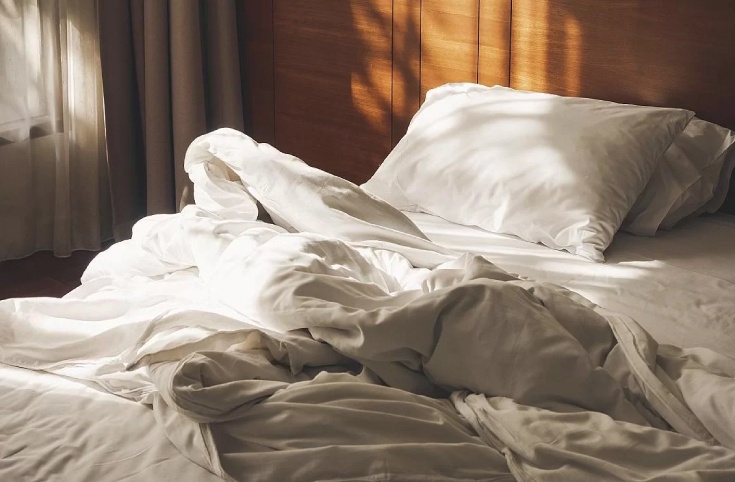It’s easy to confuse a duvet from a comforter or a blanket. Terminology on this subject can be quite confusing especially when the differences are not so obvious. So what is a duvet and should it have a duvet cover? Let’s find out.
It’s essential to understand what sets a duvet apart from other bedding items. A duvet is a soft, flat bag filled with down, feathers, wool, or synthetic fibers. Typically, duvets are used with a removable cover, similar to how a pillow uses a pillowcase. This makes them easy to clean and change according to your style.
When purchasing a duvet, it’s beneficial to refer to a duvet buying guide. Such guides help you choose the right type and material for your needs, ensuring maximum comfort and longevity.
When is it appropriate to go for a duvet and not a comforter
A word which can sum up duvets, comforters and quilts is “blanket”. They are all used as a bed cover to keep warm and to snuggle up in while it’s cold outside.
The differences between all of them begin when we examine how they are made, put together and what sort of filling types there are.
How to recognize Duvets from other types of bed coverings

Duvets are characterized as one big, puffy bed cover which has only one layer. It’s filled with dawn or cotton and most often made up from either cotton or synthetic fabrics. The duvet is the only type of blanket, which has a “pillowcase-like” covering to protect it from spills.
This makes it super comfortable for messy gusts or children. The duvet cover itself can be made from different kinds of fabrics, from cotton to Kashmir adding much needed luxury to anybody’s life.
Quilted blankets and comforters do not have a covering of their own. Quilts are comprised of only one layer most often wool, while comforters having 3 layers with a natural filling in the middle.
There are some important factors which will determine what sort of duvet or duvet cover you should get. Here are our 8 pro tips on choosing the best duvet and duvet cover for your home. This is the essence of a good duvet buying guide.
1. Will it be Used in Winter, Spring or Summer
The type of duvet really depends on the comfort and protection you are looking for. There are sorts which are filled with a different variety of down and goose feathers.
Those types are specifically made for colder climates and times of year and can be complimented with a duvet cover which allows for better insulation.
Spring and summer duvets are lighter and allow for better air circulation leaving you cool and comfortable, while providing the necessary softness – who doesn’t like the feel of a cloud?
2. Will it Match your Interior Design

There’s nothing more painful than to enter a room with differing colors which simply don’t match up. Due to the wide variety of duvet cover designs, sizes and colors, you can mix and match colors to fit your particular tastes and desires.
While comfort is quite important, the softness of the duvet has this covered – the aesthetics really depend on the cover and design you choose. There are as many designs as there are people on this earth – so keep looking and we’re sure you’ll find something really cute. Including these aesthetic considerations in your duvet buying guide will ensure your satisfaction.
3. Should I Go Natural or Use Synthetic Duvet Filling
The filling of your duvet determines the amount of warmth and breathability you will get from it. There are two main types – synthetic and natural filling for duvets – both with their pros and cons.
Synthetic duvets are straight up more affordable and have more heat retention properties, but can quickly make you heat up and sweat. They are easy to dry and clean, however, due to the thickness of the material, it’s recommended that you rinse twice to remove all of the detergent.
Natural duvets, on the other hand, a lot puffier and have great heat retention properties. While they will keep you warm, they will not make you sweat and will not make you overheat even during the summer.
They are a bit more expensive though, as the natural filling is most often from feathers or goose dawn.
3.1 Considering the maintenance
Washing a natural duvet will take a bit more time and can only be done with low heat, because it would otherwise ruin the feathers and down. Synthetics are a lot easier to keep up with and will take more beating and usage, even if they are not used with a duvet cover.
Speaking of a duvet cover, this choice will determine to a great extent, how long your duvet will last. Stains and blemishes on duvets are quite common, as it’s not easy to resist the comfort they provide and not combine it with a movie night.
So choose an appropriate duvet cover which will stave off water or any wet substances from the center. It’s beneficial to consult a duvet buying guide when selecting the right duvet cover to meet your specific needs.
4. Do I sleep warm, cold or normal

The body is usually really good at regulating its own internal temperature. However, the temperature of the skin can be quite different between people.
Some feel cold all the time and need all the blankets and duvets they can get, other’s are icemen and don’t really need so much warmth even during the winter.
The normal sleepers are people who prefer a warm duvet during the winter and a light duvet during the summer so their body can readily regulate their body temperature.
If you are a warm sleeper you’d probably do best with all year round duvet which is designed to keep you comfy during all seasons. These types are most often with natural filling, though there are synthetic variants which provide similar comfort as natural duvet filling.
If you are a cold sleeper, you’d best do with a sheet during the summer and a light duvet during the winter. Due to ancestry and body-fat, one may feel comfortable even in cold climates – thicker skin does help in this instance as well.
5. How puffy and full do I like my duvets
There are, of course, numerous types of duvet filling volumes. Some are lighter and are best suited for warmer times of year, others are more dense and puffier, which makes them heavier.
Depending on your personal preferences you can go for a bigger volume duvet with down which will retain its softness and be relatively light weight.
Who should go for lighter duvets and who for heavier? The answer really depends on your preferences. Since people may see different things in the same object – you need to determine for yourself.
The weight of a nice, heavy blanket may make you feel secure and safe, while someone else might feel as if it’s suffocating them.
If you are uncertain which type is for you, think about what your current blanket or covering is, see what you like and dislike about it and that’s how you get the right profile of duvet volume for yourself.
6. What sort of duvet stitching and build am I looking for

To the untrained eye, all duvets are created the same, however, this is far from the truth. The fluff of a duvet really depends on the stitching it comes with. There are several types of segmentation, the most popular and widely used one is called “box” or “baffle box”.
This technique has a highly recognizable form and shape and allows for the down to be properly and evenly distributed around the entire duvet. This way, there will be no spots without insulation creating a uniform layer of warm air which protects you from the unpleasant chill at night.
Aside from an aesthetic purpose, this sort of stitching has a stabilizing effect for the entire duvet and makes its use even more comfortable, especially if you toss and turn. This way there’s no chance that the dawn from one part of the duvet will accumulate unevenly towards one end.
7. What Sort of Fabric do I Want my Duvet to be Made out of
This is a quintessential question as it will determine the hand-feel of your duvet. The higher the thread count of your duvet the softer and nicer it will feel to the touch.
The minimum thread count of any duvet is 250 – it stops down from coming out of the duvet and provides a pleasant and soft sensation.
The higher the count, the more comfort and softness you will feel each time. However, it should be noted that the higher the count, the more difficult the maintenance is.
Higher thread counts require less heat when treated, which can make it difficult to remove stains. This is why you need a duvet cover which provides both protection and softness for your sleep.
8. What Sort of Duvet Cover will Suit my needs

As was mentioned above, the duvet cover is the difference between a nicely kept duvet and an irremovable stain. To an extent, the duvet cover determines the amount of comfort and softness you will be feeling when snuggled up.
Just as with the high thread count of the duvet itself, the cover will dictate how nice it feels to the touch. And the idea of a duvet is to not only keep you warm, but to also give you a place where you can truly feel comfortable and fall into a deep, relaxing sleep.
Higher thread count also means a higher price, however, the sensation and softness of a properly made duvet cover will make you forget all of the worries and stress accumulated during the day.
To Sum it all Up
A good question you should ask yourself is “What do I really need out of my duvet?” This fundamental question will determine the answer to all of the aforementioned formulations in this duvet buying guide.
- When will the duvet be used;
- Match it to your interior design;
- Is natural or synthetic filling more of your style;
- Do you feel hot or cold at night;
- How soft and puffy do you like your duvet;
- How should the duvet be stitched;
- The Fabric of the duvet;
- What type of duvet cover is best for my needs.
We hope our article has been informative and has helped you make a better decision for yourself. While on the topic of bedding, in our pillow article you can find a more comprehensive digestion of the topic of comfort and relaxation.

I love traveling and writing. I’ve lived in different places across the world – Thailand, Japan, Indonesia and Bulgaria – and also traveled to many countries in Europe, Asia and South America.
At last I decided that the US was the best place for me and returned to my hometown.
Now I’m enjoying my time in Columbus, Ohio and I’ve turned to a new page in my life – blogging.

